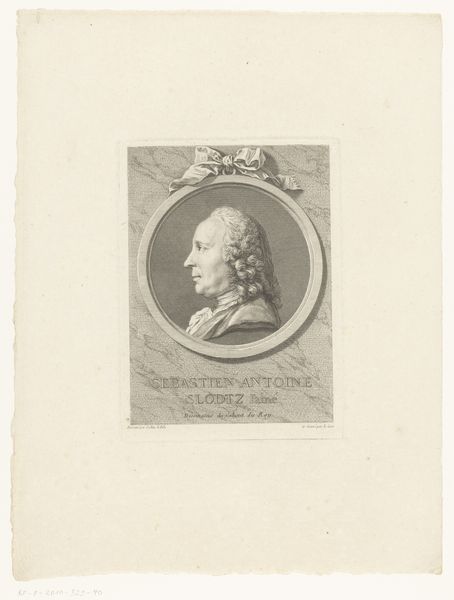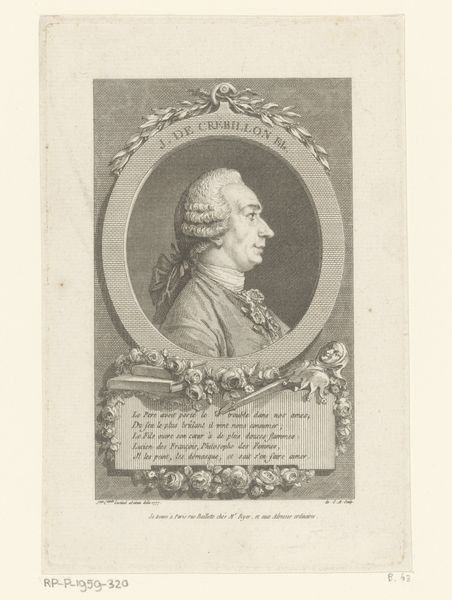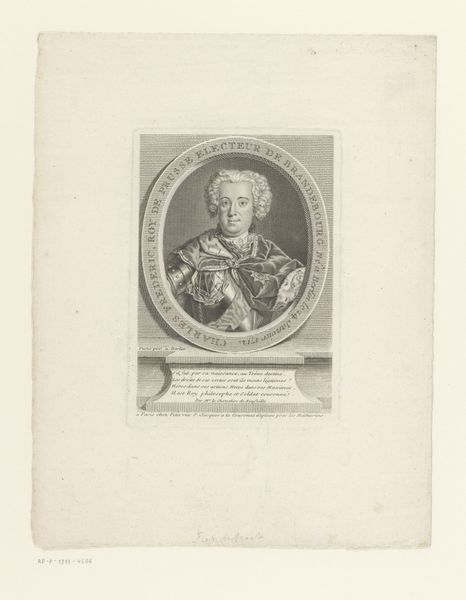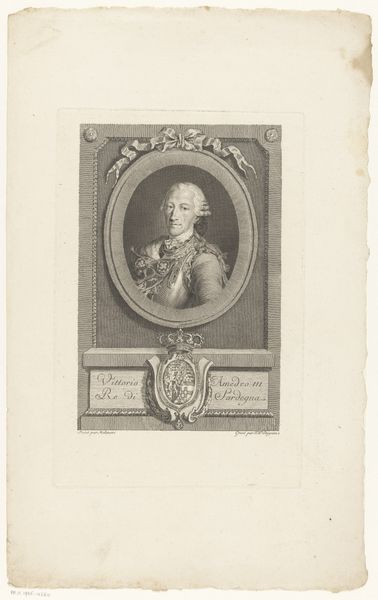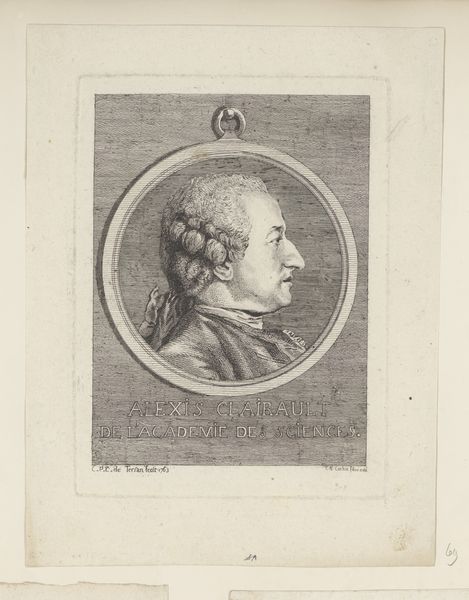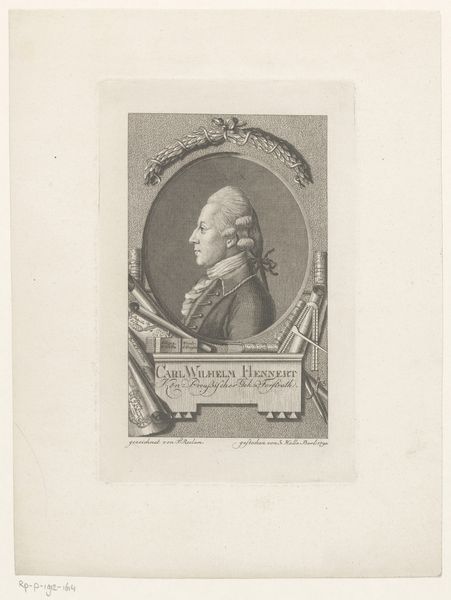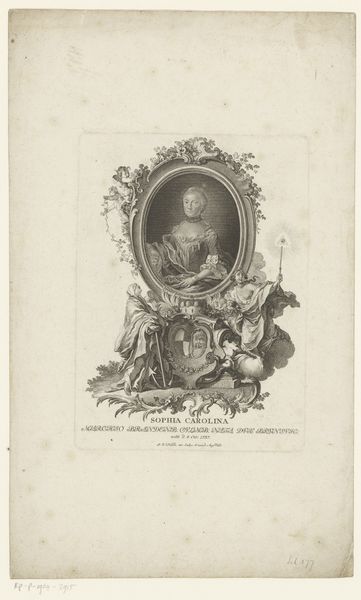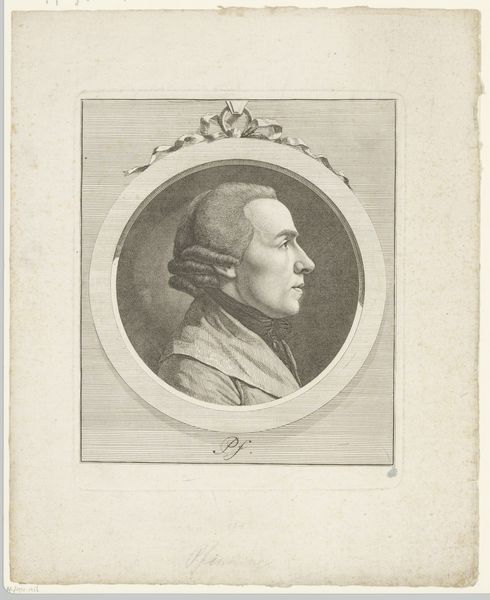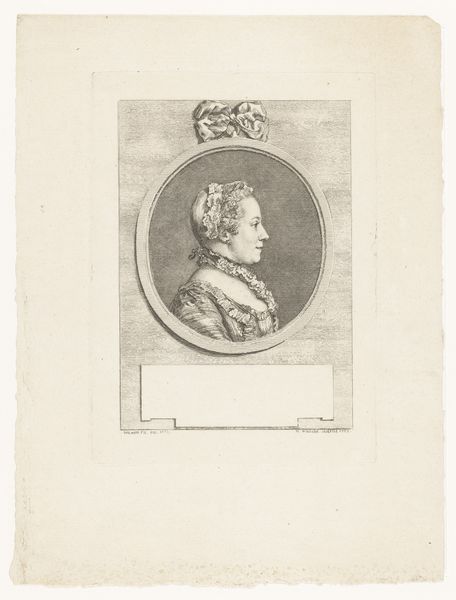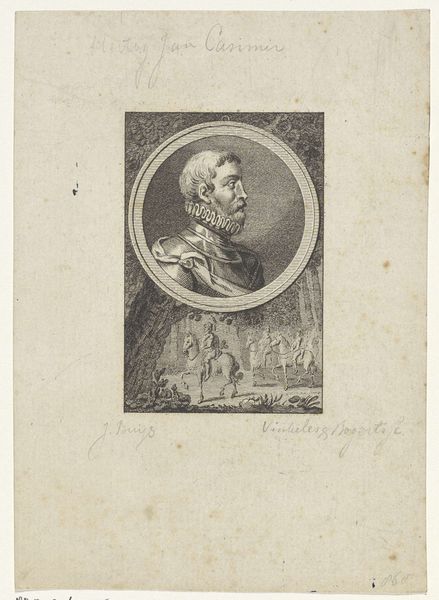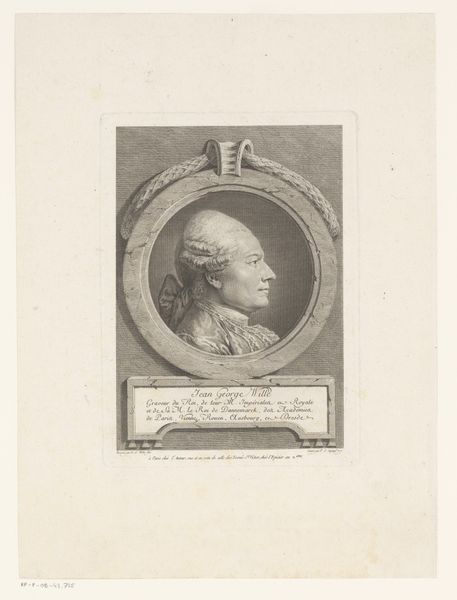
Dimensions: Sheet: 7 7/8 × 5 7/8 in. (20 × 15 cm) Plate: 6 3/4 × 5 3/16 in. (17.2 × 13.2 cm)
Copyright: Public Domain
Curator: Here we have Augustin de Saint-Aubin’s "Portrait of Jean Monnet," an engraving dating to 1765. Editor: It’s a very formal portrait. The tight oval frame and the decorative elements underneath give it a somewhat constricted feeling, almost like a memorial. Curator: The formality is definitely a product of its time. Portrait engravings like this were often commissioned by or for members of the upper class, serving as a form of social currency, advertising status and refinement. Editor: Yes, and the roses, the ribbons, and the masks are symbols. It feels as if the artist has arranged the details to make a riddle that celebrates the life or role of the figure represented in the portrait. Curator: Precisely. Jean Monnet was the director of the Opera Comique at the time, and this engraving appeared as the frontispiece in a publication of the theater's anthology. That ornate, somewhat hidden theatricality you're sensing definitely references that profession. Editor: Look closely at the Latin inscription that appears, partially unfurled, below his portrait: "mulcet et movet." This could be roughly translated as, "it sweetens and moves"—likely referencing Monnet’s profession, opera, with its characteristic moving musical scores. Curator: Saint-Aubin was a highly sought-after engraver in Parisian society during the reign of Louis XV. These portrait engravings, while relatively small, had an outsized influence, circulating images and ideals within elite circles. They shaped the perception of power and intellect. Editor: Even now, those images can evoke the complex socio-political realities of their time. Engravings often included details that served almost like miniature coats of arms, visually announcing the subject's affiliations and tastes to a discerning public. Curator: Thinking about the Metropolitan Museum housing this portrait brings another layer to it. We, as an institution, participate in that continuous process of assigning cultural value and determining historical importance, just as Louis XV society did when commissioning these images. Editor: Absolutely, looking closely, it isn't just about appreciating its detail, it's an acknowledgement of how cultural memory is shaped by the symbols that circulate through generations. Curator: Exactly. And with Saint-Aubin's artistry, and Monnet's cultural legacy, it offers a compelling reminder of the interconnectedness of art, society, and the ongoing negotiation of meaning.
Comments
No comments
Be the first to comment and join the conversation on the ultimate creative platform.
